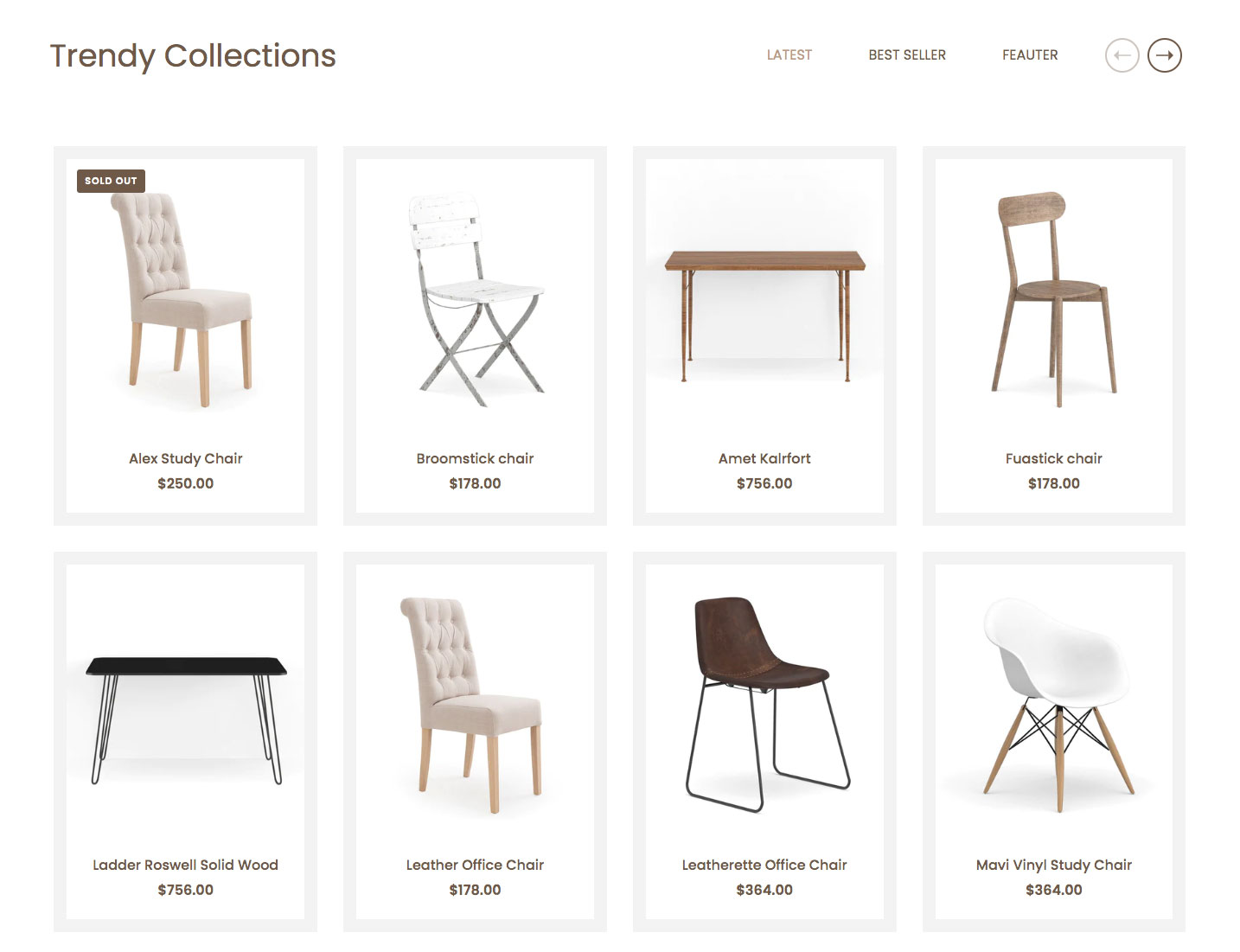The Best Tips To Sell Furniture Online
In the ever-evolving landscape of commerce, the digital realm has become the new frontier for furniture enthusiasts and entrepreneurs alike. As we step into 2025, the world of online furniture sales has never been more promising. The allure of selling furniture online lies not only in its potential for profitability but also in its ability to connect with a global customer base.
In this comprehensive guide, we’ll explore the strategies, tools, and insights needed to thrive in the online furniture market of 2025. Whether you’re an established furniture retailer looking to expand your online presence or an aspiring entrepreneur eager to tap into this burgeoning industry, this article will provide you with the knowledge and practical tips necessary to navigate the digital marketplace successfully. From crafting captivating product listings to mastering the art of online marketing, join us on this journey to discover how to unlock the vast potential of selling furniture online in 2025.
The following tips will help you a lot if you want to start a successful furniture business:
1. Setting the Stage
In 2025, the e-commerce landscape for furniture sales is experiencing a robust surge. An increasing number of shoppers are gravitating towards online platforms to discover their ideal furnishings, whether it’s the allure of a vintage sofa or the sleekness of a modern dining set. The allure of online furniture shopping lies in the sheer convenience it offers—customers can leisurely peruse a vast array of options from the comfort of their own homes, contributing to the meteoric rise in popularity.
For both neophyte and experienced sellers alike, venturing into online furniture sales presents an array of distinct advantages that make it an irresistible proposition. These notable advantages encompass an expansive customer base, no longer confined to the constraints of locality, as your products can now effortlessly reach anyone with an internet connection. Additionally, the transition to online sales translates to significantly reduced overhead costs, as the burdens of physical store expenses, such as rent, utilities, and staffing, are dramatically alleviated. This newfound efficiency enables you to channel your resources more strategically, maximizing profitability in the digital furniture market.
2. Preparing Your Furniture
Quality product images and descriptions: The cornerstone of successful online furniture sales is the presentation of your products. High-quality images and detailed descriptions are your virtual shop windows. Invest in professional photography to showcase your furniture in the best light. Ensure that your product descriptions are informative and highlight key features, such as materials, dimensions, and care instructions.
Staging and photographing furniture effectively: Effective staging and photography can make a world of difference in attracting buyers. Consider these tips:
- Lighting: Use natural light or studio lighting to ensure your furniture is well-lit and visually appealing.
- Background: A clean and uncluttered background allows the furniture to take center stage.
- Angles: Capture your furniture from various angles to provide potential buyers with a comprehensive view.
- Scale: Include objects in the photos to help viewers gauge the size of the furniture.
Pricing strategies for online furniture sales: Pricing your furniture competitively is vital for success. Research your competitors and assess market trends. Consider offering promotions or discounts to attract customers. Additionally, be transparent about any additional costs, such as shipping fees or taxes, to build trust with your audience.

3. Choosing the Right Platform
When it comes to selling furniture online, you have a plethora of platforms and marketplaces to choose from:
- Shopify: Shopify is a user-friendly e-commerce platform that helps small businesses build an online store and sell online through one streamlined dashboard. Shopify merchants can build a modern online store and sell on social media sites, seller marketplaces, other blogs, and websites, via email, text, and chat.
- Amazon: As one of the largest e-commerce platforms globally, Amazon provides access to a massive customer base.
- eBay: Known for its auction-style listings, eBay can be a great platform for unique or vintage furniture pieces.
- Etsy: Ideal for artisans and sellers of handmade or customized furniture.
- Your Website: Building your own e-commerce website offers complete control over your brand and sales process.
Each platform has its advantages and disadvantages. Selecting the right platform depends on your unique goals and resources. Consider your target audience, the type of furniture you sell, and your marketing strategy. It’s often beneficial to diversify and sell on multiple platforms to maximize your reach.

4. Building an Online Presence
To maximize the reach of your furniture business, optimizing your website for search engines, commonly referred to as SEO, is essential. Effective SEO techniques can enhance your website’s visibility in search engine results, making it more likely for potential customers to discover your products when searching for furniture online. This involves strategically incorporating relevant keywords, improving site speed, and ensuring mobile-friendliness, among other tactics. An optimized website not only attracts more organic traffic but also elevates your brand’s credibility in the eyes of consumers.
In the contemporary digital era, social media marketing plays a pivotal role in furniture sales. Platforms like Instagram, Facebook, and Pinterest are ideal spaces to showcase your furniture pieces through visually appealing posts and engaging content. By consistently sharing captivating images and videos, you can not only reach a broader audience but also create a loyal following of furniture enthusiasts. Moreover, social media facilitates direct interaction with customers, allowing you to address inquiries, gather feedback, and build lasting relationships. In 2025, an active and well-executed social media marketing strategy is indispensable for selling furniture successfully in the digital realm.
5. Managing Inventory and Orders
To excel in this competitive market, it’s crucial to employ effective inventory management strategies. Utilizing inventory management software can help you track stock levels, forecast demand, and optimize reorder points, ensuring you neither overstock nor run out of popular items. Additionally, employing a just-in-time inventory system can minimize storage costs and reduce the risk of outdated stock.
When it comes to order fulfillment and shipping, offering multiple options can enhance customer satisfaction. This might include expedited shipping for those in a hurry or more cost-effective, eco-friendly shipping for the environmentally conscious. Furthermore, partnering with reliable shipping carriers and negotiating favorable rates can streamline the logistics of delivering bulky furniture items.
Inevitably, some customers may wish to return their purchases, so a well-thought-out returns policy is essential. Ensure it’s easily accessible on your website and offers clear instructions for initiating returns. Excellent customer service during this process can turn a potentially negative experience into a positive one, fostering customer loyalty. Be prompt and transparent in handling returns and refunds, as this can significantly impact your reputation and repeat business. Mastering inventory management, order fulfillment, and exceptional customer service will be instrumental in the successful sale of furniture.
6. Staying Competitive
Staying competitive is paramount for sustained success. One key aspect of this is keeping up with industry trends. Furniture design and consumer preferences are constantly changing, so staying informed about the latest trends in materials, styles, and sustainability can help you remain relevant and appealing to your target audience. This might involve attending trade shows, following design magazines, or networking with industry experts to gain insights into emerging trends.
Moreover, to outshine competitors, it’s essential to implement strategies that set your furniture business apart. This could entail offering unique customization options, providing exceptional customer service, or even embracing innovative technologies such as augmented reality for virtual furniture placement in customers’ homes.
Customer feedback plays a pivotal role in enhancing your products and services. Encourage customers to share their thoughts and experiences, whether through reviews, surveys, or direct communication. This valuable input can guide product improvements, refine your marketing strategies, and address any pain points in the buying process.

Conclusion
In summary, selling furniture online in 2025 requires a multi-faceted approach that encompasses building a robust online presence through a professional website and effective social media marketing. It also involves mastering inventory management, optimizing order fulfillment and shipping, and providing exceptional customer service, including a clear returns policy. To stay competitive, it’s essential to keep a pulse on industry trends, implement strategies that set your business apart, and value customer feedback for continuous improvement. In this digital age, the furniture market is ripe with opportunities, and by following these strategies, you can position yourself for success. So, if you’ve been contemplating starting your online furniture business, now is the time to take action. Embrace the dynamic world of online furniture sales in 2025, and watch your entrepreneurial dreams flourish in the digital marketplace.








